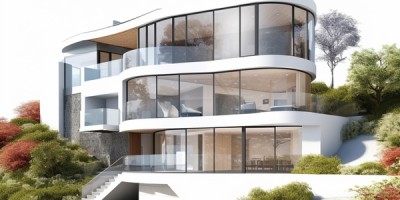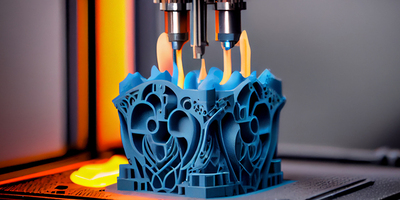V-Ray, developed by Chaos Group, is a leading rendering engine used for producing high-quality photorealistic images, animations, and visualizations. It integrates with popular 3D modeling software such as 3ds Max, SketchUp, Rhino, Revit, Maya, and Cinema 4D, providing designers, architects, and visual artists the ability to bring 3D models to life with realistic lighting, materials, and environments.
V-Ray is widely adopted in architecture, interior design, product visualization, film, and gaming industries due to its speed, accuracy, and advanced rendering capabilities. It supports both CPU and GPU rendering, real-time previews, global illumination, and physically accurate material and light simulations, making it a versatile tool for professionals seeking photorealistic results.
Industry-standard tool for architectural visualization, product rendering, and animation.
Enhances designs with realistic lighting, materials, and environmental effects.
Provides skills for careers in architecture, interior design, visual effects, gaming, and advertising.
Reduces rendering time while improving the quality and realism of 3D visuals.
Photorealistic Rendering – Create lifelike images and animations of 3D models.
Real-Time Rendering – Preview designs instantly with interactive rendering.
Advanced Lighting & Materials – Simulate realistic light, shadows, reflections, and refractions.
Integration – Works seamlessly with software like 3ds Max, SketchUp, Revit, Rhino, and Maya.
Flexible Workflow – Supports CPU/GPU rendering, distributed rendering, and cloud rendering for faster outputs.
Produce photorealistic renderings of buildings, interiors, and furniture.
Create realistic lighting, shadows, and material textures for client presentations.
Visualize products, prototypes, and consumer goods with accurate materials and lighting.
Simulate real-world environments to showcase product aesthetics.
Render 3D animations and cinematic sequences for film, advertising, and VFX projects.
Integrate with animation pipelines for high-quality visual storytelling.
Generate realistic assets and environments for games and VR/AR applications.
Enhance visual fidelity for immersive experiences.
Present design concepts, architectural walkthroughs, and client proposals with photorealism.
Improve communication between designers, clients, and stakeholders.
By the end of this course, learners will be able to:
Understand the V-Ray interface and rendering workflow for 3D visualization.
Apply realistic materials, textures, and lighting to 3D models.
Create photorealistic images and animations for architecture, interiors, and products.
Use real-time rendering and interactive previews to optimize workflow efficiency.
Simulate natural and artificial lighting for accurate environmental effects.
Integrate V-Ray with software like 3ds Max, SketchUp, Revit, and Rhino.
Render high-quality output for client presentations and marketing purposes.
Optimize scenes for faster rendering using CPU, GPU, and distributed rendering techniques.
Produce visual content for gaming, VR/AR, and animation pipelines.
Develop professional skills for careers in visualization, architecture, interior design, and VFX industries.
100 Hours of Class

Component Based Training
Industry Based Training
International Certifications
100% Placement Assistance
Free Certified Workshops & Seminars
Syllabus Based Classes

Component Based Training
Industry Based Training
International Certifications
100% Placement Assistance
Free Certified Workshops & Seminars
Syllabus Based Classes

Component Based Training
Industry Based Training
International Certifications
100% Placement Assistance
Free Certified Workshops & Seminars
Syllabus Based Classes

Component Based Training
Industry Based Training
International Certifications
100% Placement Assistance
Free Certified Workshops & Seminars
Syllabus Based Classes

Component Based Training
Industry Based Training
International Certifications
100% Placement Assistance
Free Certified Workshops & Seminars
Syllabus Based Classes

Component Based Training
Industry Based Training
International Certifications
100% Placement Assistance
Free Certified Workshops & Seminars
Syllabus Based Classes

Component Based Training
Industry Based Training
International Certifications
100% Placement Assistance
Free Certified Workshops & Seminars
Syllabus Based Classes
No: #172, Raahat Plaza,
2nd Floor, Office No: 196 & 197,
Arcot Road, Vadapalani,
Chennai - 600026.
caddschool@gmail.com
© CADD SCHOOL. All Rights Reserved. CADD SCHOOL